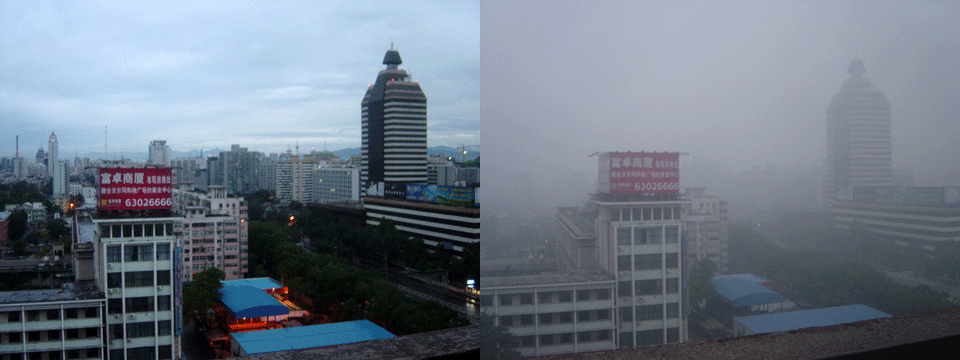How a performance artist used an industrial vacuum cleaner to turn Chinese smog into a brick

For the pea soupers of 1950s London, read Beijing in 2015. The Chinese capital city has gained a notorious reputation for its suffocating smog. One person decided to do something about it. For 100 days, artist Brother Nut carted an industrial vacuum cleaner through the streets of Beijing and sucked the city’s polluted air with the wand held high.
His industrial vacuum cleaner collected over 100g of pollutants – much of this made of particles one thirtieth of a strand of human hair. Then, the contents was mixed in clay and made into a house brick. His vacuum cleaning has attracted the attention of passers by who have stopped him for selfies.
The Smog Free Project
On a serious note, the idea of industrial vacuum cleaners for clearing smog has been mooted. In 2013, Dutch artist Daan Roosegaarde created the Smog Vacuum, which turns the particulates into a tar like gel. His invention creates an electrostatic field which magnetises the smog and pulls it out of the air.
Today, Daan Roosegaarde is noted for his ecological projects. His Studio Roosegaarde website includes state-of-the-art projects such as the Smart Highway – a road with markings that glow in the dark at night time. He was chosen as Artist of the Year for 2016 in his native Netherlands, after 40,000 public votes.
Mr. Roosegaarde’s industrial vacuum cleaner, under The Smog Free Project on his website, is a static cuboid device which resembles a weather station. As well as their essential function, they look good in public spaces, as a form of public art.
With 2015 set to be the hottest year on Earth since records began, the case for improving our own environment is greater than ever.
Clean Hire, 11 December 2015.
Image Credits:
“Beijing smog comparison August 2005” by Bobak – Own work. Licensed under CC BY-SA 2.5 via Commons.
